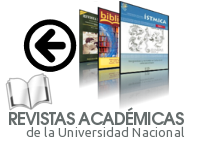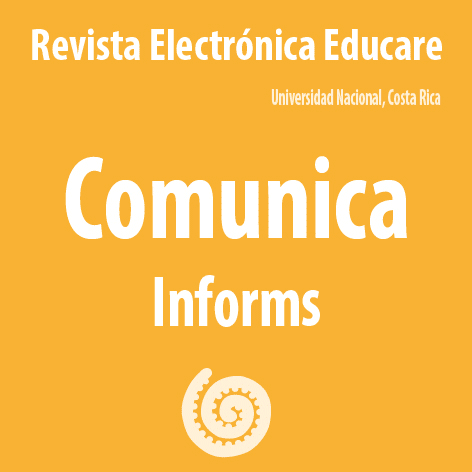Flipped Learning Model to Achieve Learning Goals in the Research Methodology Course in Undergraduate Students
DOI:
https://doi.org/10.15359/ree.22-3.9Keywords:
Flipped learning, student, educational model, teacher, goalsAbstract
Introduction: Teachers are currently trying to change the traditional model to one based on learning needs of the students. The flipped (inverted) learning model seeks to promote learning through a work jointly led by teachers and students. Objective: To analyze the implementation of the flipped learning model in the achievement of goals in the Research Methodology course. Methodology: a prospective, longitudinal, quasi-experimental research design. Place: Health Sciences Faculty, at a private University. Participants: 81 undergraduate students. Interventions: A convenience non-probability sample was selected; then, the flipped learning model was implemented. The first analysis was performed in the third week of classes, and the second one in the fifteenth week, using a valid instrument with a total reliability index of 0.79. The Edoome educational platform was also used; it has characteristics of an open source learning management system. Results: 93.8% stated that the teacher and the students develop the class, 29.6% previously study the contents, and 39.5% make a summary of the class, meaning that the collaborative work predominates. 74.0% stated that the flipped learning facilitated their learning and obtained better grades in the final exam. Conclusion: The flipped classroom model proved to be effective to achieve learning goals in the Research Methodology course, and its implementation is becoming a need for the university education system.
References
Blair, N. (2012). Technology integration for the new 21st century learner. Principal, 91(3), 8-11. Recuperado de https://www.naesp.org/sites/default/files/Blair_JF12.pdf
Coufal, K. (2014). Flipped learning instructional model: Perceptions of video delivery to support engagement in eight grade math (Tesis doctoral). Lamar University, Beumont. Recuperado de https://conference.iste.org/uploads/ISTE2015/HANDOUTS/KEY_94372815/ISTE.pdf
Crews T. y Butterfield, J. (2014). Data for flipped classroom design: Using student feedback to identify the best components from online and face-to-face classes. Higher Education Studies, 4(3), 38-47. doi: https://doi.org/10.5539/hes.v4n3p38
Domínguez, L. C., Vega, N. V., Espitia, E. L., Sanabria, Á.E., Corso, C., Serna, A. M. y Osorio, C. (2015). Impacto de la estrategia de aula invertida en el ambiente de aprendizaje en cirugía: Una comparación con la clase magistral. Biomédica, 35(4), 513-521. doi: https://doi.org/10.7705/biomedica.v35i4.2640
Driscoll, T. (2012). Flipped learning & democratic education (Tesis de grado). Columbia University, Nueva York.
Fulton, K. (2012). Upside down and inside out: Flip your classroom to improve student learning. Learning & Leading with Technology, 39(8), 12-17. Recuperado de https://files.eric.ed.gov/fulltext/EJ982840.pdf
Gaughan, J. E. (2014). The flipped classroom in world history. The History Teacher, 47(2), 221-244. Recuperado de http://www.societyforhistoryeducation.org/pdfs/F14_Gaughan.pdf
Goodwin B. y Miller K. (2013). Evidence on flipped classrooms is still coming in. Educational Leadership, 70(6), 78-80. Recuperado de http://www.ascd.org/publications/educational-leadership/mar13/vol70/num06/Evidence-on-Flipped-Classrooms-Is-Still-Coming-In.aspx
Hamdan, N., McKnight, P., McKnight, K. y Arfstrom, K. M. (2013). The flipped learning model: A white paper based on the literature review titled (A Review of flipped learning). Estados Unidos: Flipped Learning Network. Recuperado de http://flippedlearning.org/wp-content/uploads/2016/07/WhitePaper_FlippedLearning.pdf
Hawks, S. J. (2014). The flipped classroom: Now or never? The Journal of the American Association of Nurse Anesthetists, 82 (4), 264-269.
Lafee, S. (2013). Flipped learning. Education Digest, 79(3), 13-18. Recuperado de https://search.proquest.com/openview/56c35e3479bcb0e8906572d9eee91a97/1?pq-origsite=gscholar&cbl=25066
Lage, M., Platt, G. y Treglia (2000). Inverting the classroom: A gateway to creating an inclusive learning environment. The Journal of Economic Education, 31(1), 30-43. doi: https://doi.org/10.2307/1183338
Madrid, E. M., Angulo, J. y Olivares-Carmona K. M. (2016). La enseñanza inversa. Una propuesta educativa. En J. J. Vales, J. Angulo, R. I. García, y C. O. Acosta (Eds.), Aplicaciones de la tecnología en y para la educación (pp. 79-95). México DF: Tabook Servicios Editoriales e Integrales. doi: 10.13140/RG.2.1.1933.8643
Martínez-Olvera, W., Esquivel-Gámez, I. y Martínez-Castello, J. (2015). Acercamiento teórico-práctico al modelo del aprendizaje invertido. Trabajo presentado en la conferencia: II Congreso internacional de transformación educativa, At, Tlaxcala, México. doi: 10.13140/RG.2.1.2653.6087
Mason, G., Shuman, T. R. y Cook K. E. (2013). Comparing the effectiveness of an inverted classroom to a traditional classroom in an upper-division engineering course. Institute of electrical and electronics engineers. IEEE Transactions on Education, 56(4), 430-435. doi: https://doi.org/10.1109/TE.2013.2249066
Moffet, J. (2015). Twelve tips for “flipping” the classroom. Medical Teacher, 37(4), 331-336. doi: https://doi.org/10.3109/0142159X.2014.943710
Morgan, H. (2014). Focus on technology: Flip your classroom to increase academic achievement. Chilhood Education, 90(3), 239-241. doi: https://doi.org/10.1080/00094056.2014.912076
Observatorio de Innovación Educativa del Tecnológico de Monterrey. (2014). Aprendizaje invertido (Reporte Edu Trends). Monterrey: Tecnológico de Monterrey. Recuperado de http://www.sitios.itesm.mx/webtools/Zs2Ps/roie/octubre14.pdf
Prober, C. G. y Heath, C. (2012) Lecture halls without lectures--a proposal for medical education. New England Journal Medicine, 366(18), 1657-1659. doi: https://doi.org/10.1056/NEJMp1202451
Riquelme, A., Oporto, M., Oporto, J., Méndez, J., Viviani P., Salech, F … Sánchez, I. (2009). Measuring students’ perceptions of the educational climate of the new curriculum at the Pontificia Universidad Católica de Chile: Performance of the Spanish translation of the Dundee Ready Education Environment Measure (DREEM). Education for Health, 22(1), 1-11. Recuperado de http://www.educationforhealth.net/temp/EducHealth221112-6916199_191241.pdf
Roehl, A. (2013). Bridging the field trip gap: Integrating web-based video as teaching and learning partner in interior design education. Journal of Family and Consumer Sciences, 105(1), 42-46. doi: https://doi.org/10.14307/JFCS105.1.9
Talbert, R. (2012). Inverted classroom. Colleagues, 9(1), 19-18. Artículo 7. Recuperado de https://moodle.ruhr-uni-bochum.de/m/pluginfile.php/298363/mod_resource/content/2/Talbert_Inverted%20Classroom_ohne%20Werbung.pdf
Tucker, B. (2012). The flipped classroom. Online instruction at home frees class time for learning. Education Next, 12(1), 82-83. Recuperado de http://educationnext.org/files/ednext_20121_BTucker.pdf
Downloads
Published
How to Cite
Issue
Section
License
1. In case the submitted paper is accepted for publication, the author(s) FREELY, COSTLESS, EXCLUSIVELY AND FOR AN INDEFINITE TERM transfer copyrights and patrimonial rights to Universidad Nacional (UNA, Costa Rica). For more details check the Originality Statement and Copyright Transfer Agreement
2. REUTILIZATION RIGHTS: UNA authorizes authors to use, for any purpose (among them selfarchiving or autoarchiving) and to publish in the Internet in any electronic site, the paper´'s final version, both approved and published (post print), as long as it is done with a non commercial purpose, does not generate derivates without previous consentment and recognizes both publisher's name and authorship.
3. The submission and possible publication of the paper in the Educare Electronic Journal is ruled by the Journal’s editorial policies, the institutional rules of Universidad Nacional and the laws of the Republic of Costa Rica. Additionally, any possible difference of opinion or future dispute shall be settled in accordance with the mechanisms of Alternative Dispute Resolution and the Costa Rican Jurisdiction.
4. In all cases, it is understood that the opinions issued are those of the authors and do not necessarily reflect the position and opinion of Educare, CIDE or Universidad Nacional, Costa Rica. It is also understood that, in the exercise of academic freedom, the authors have carried out a rogorous scientific-academic process of research, reflection and argumentation thar lays within the thematic scope of interest of the Journal.
5. The papers published by Educare Electronic Journal use a Creative Commons License:
















 The articles published by Educare Electronic Journal can be shared with a Creative Commons License:
The articles published by Educare Electronic Journal can be shared with a Creative Commons License: 



